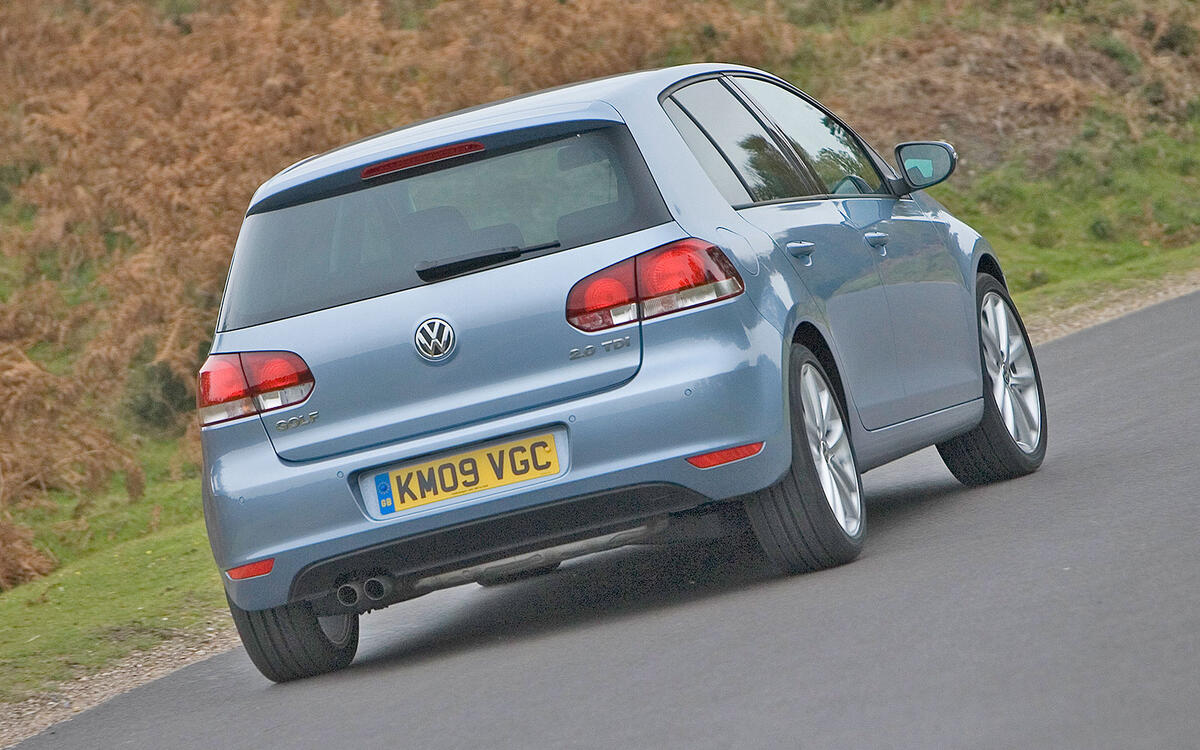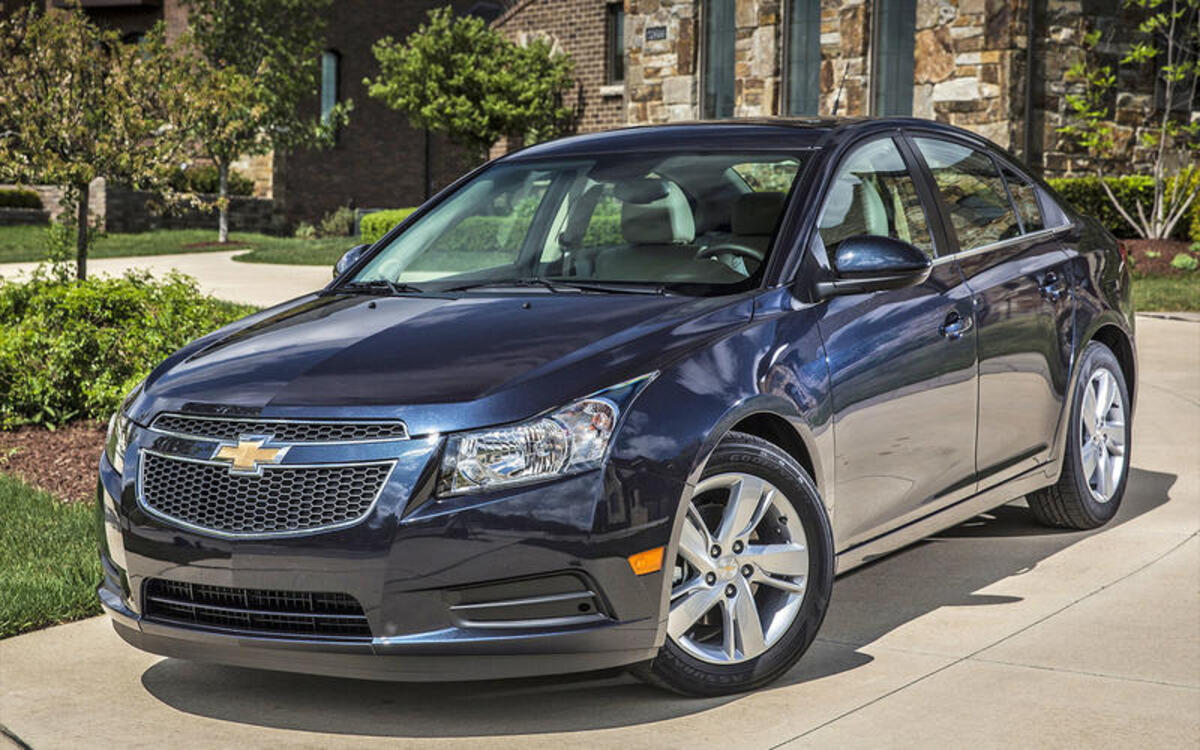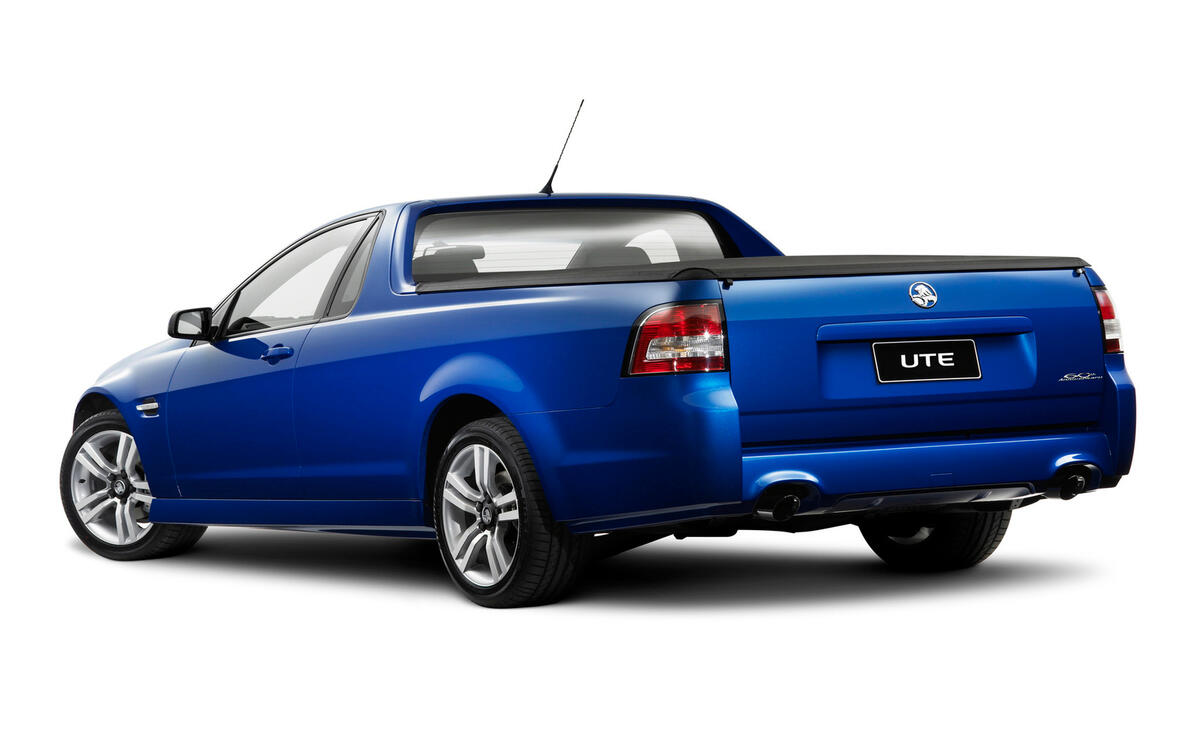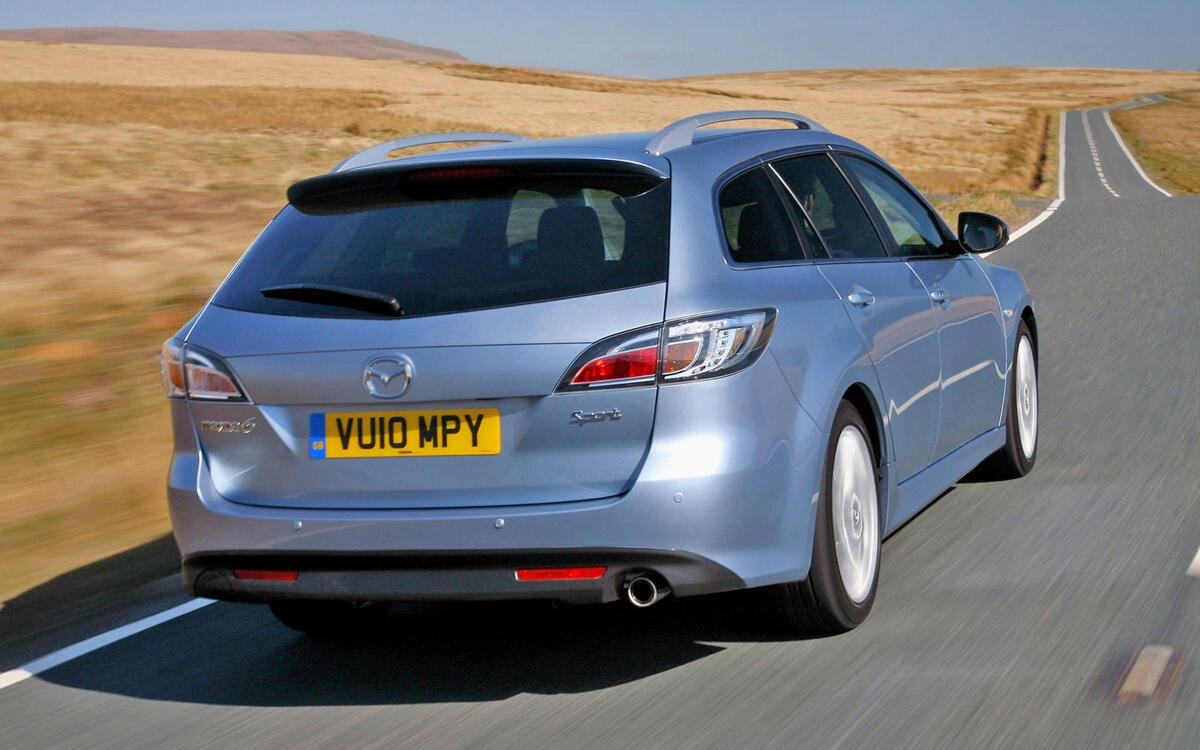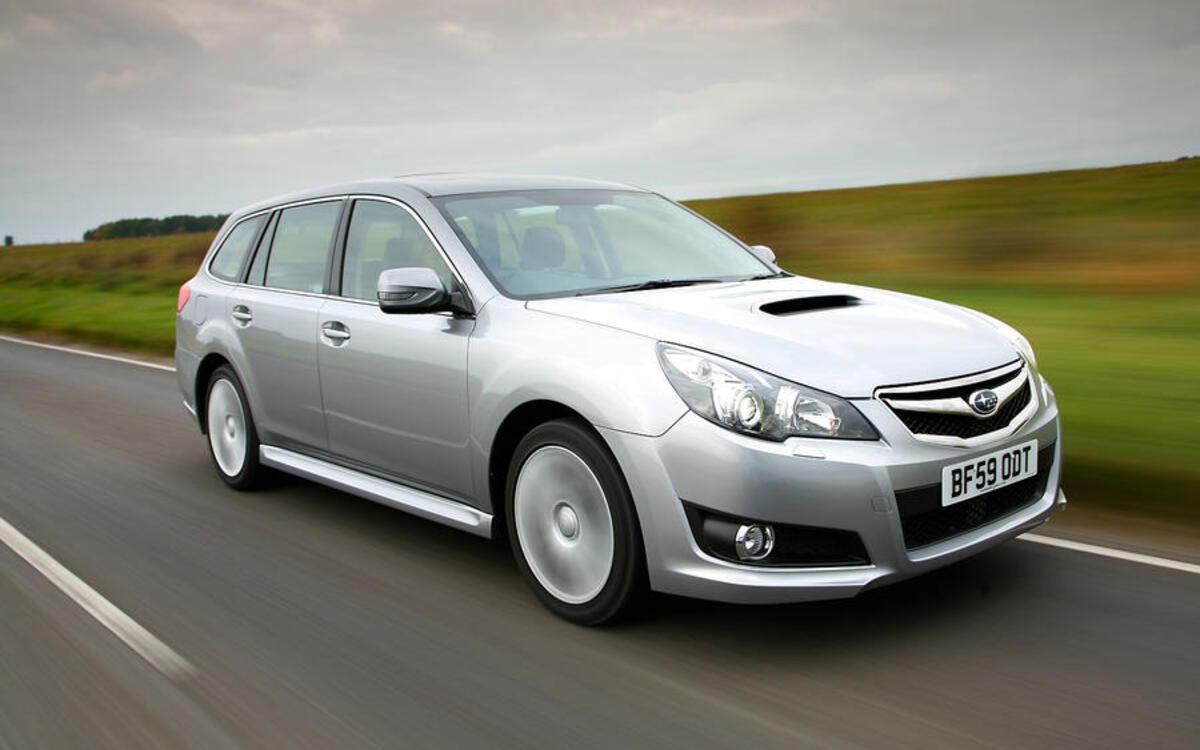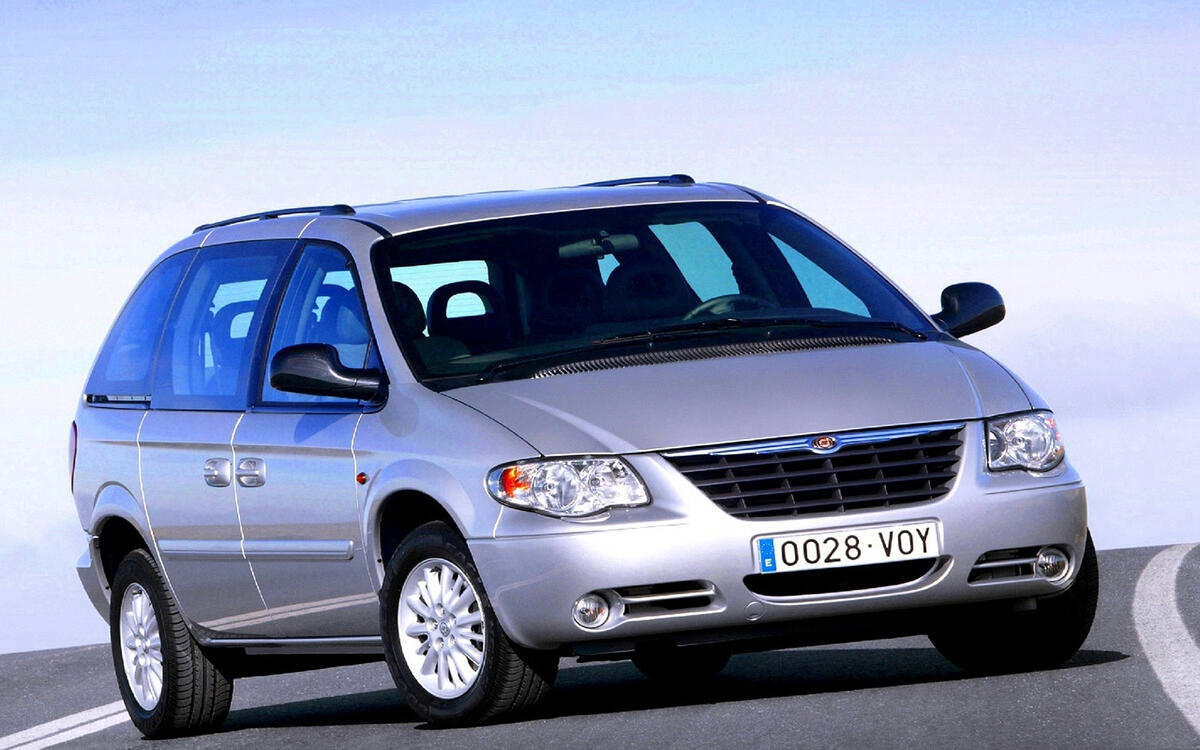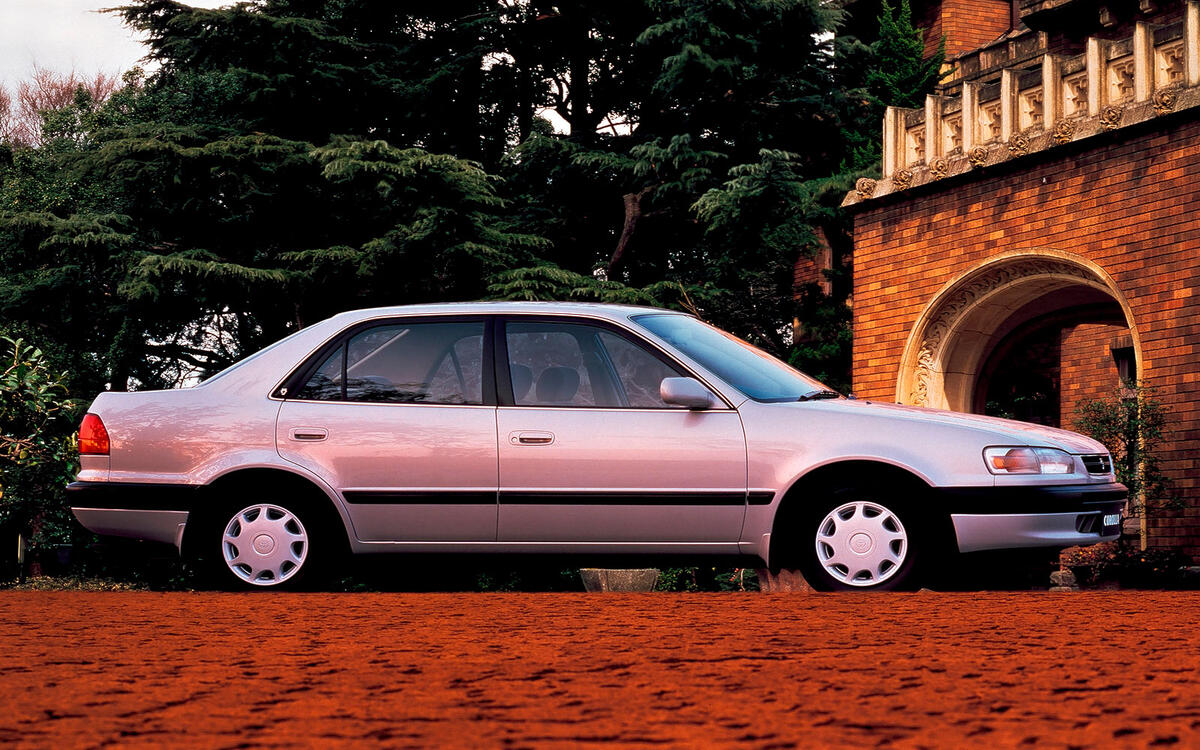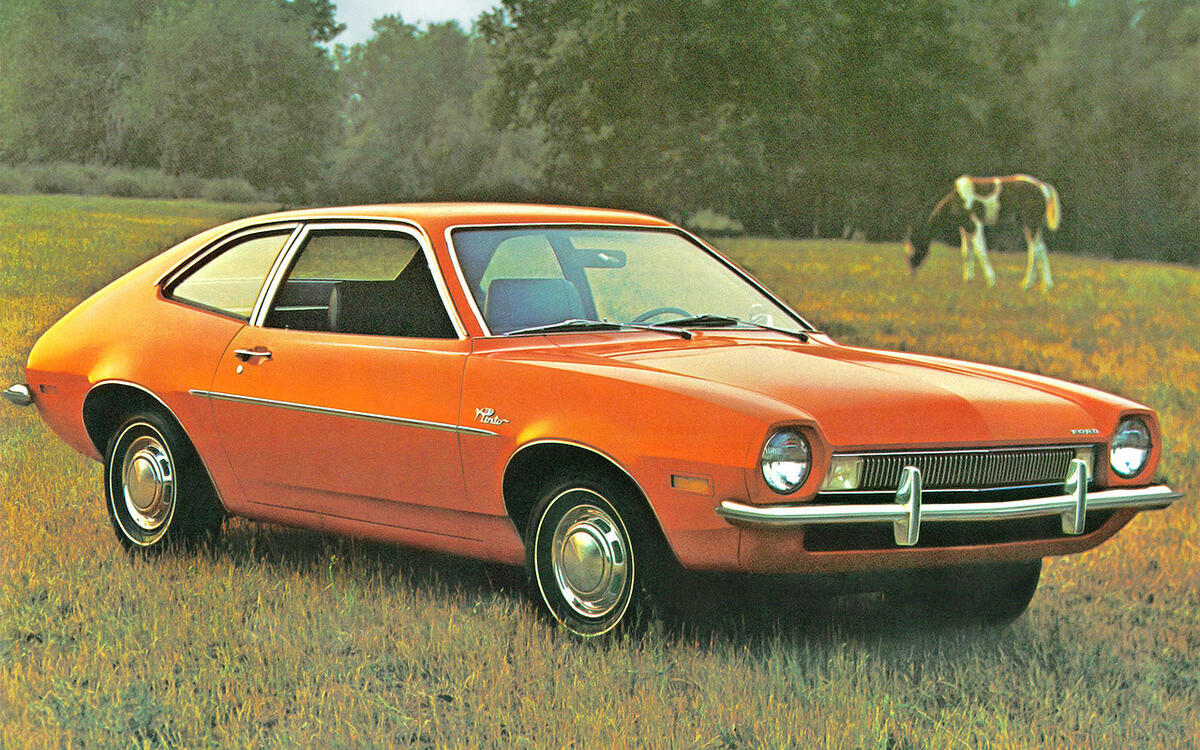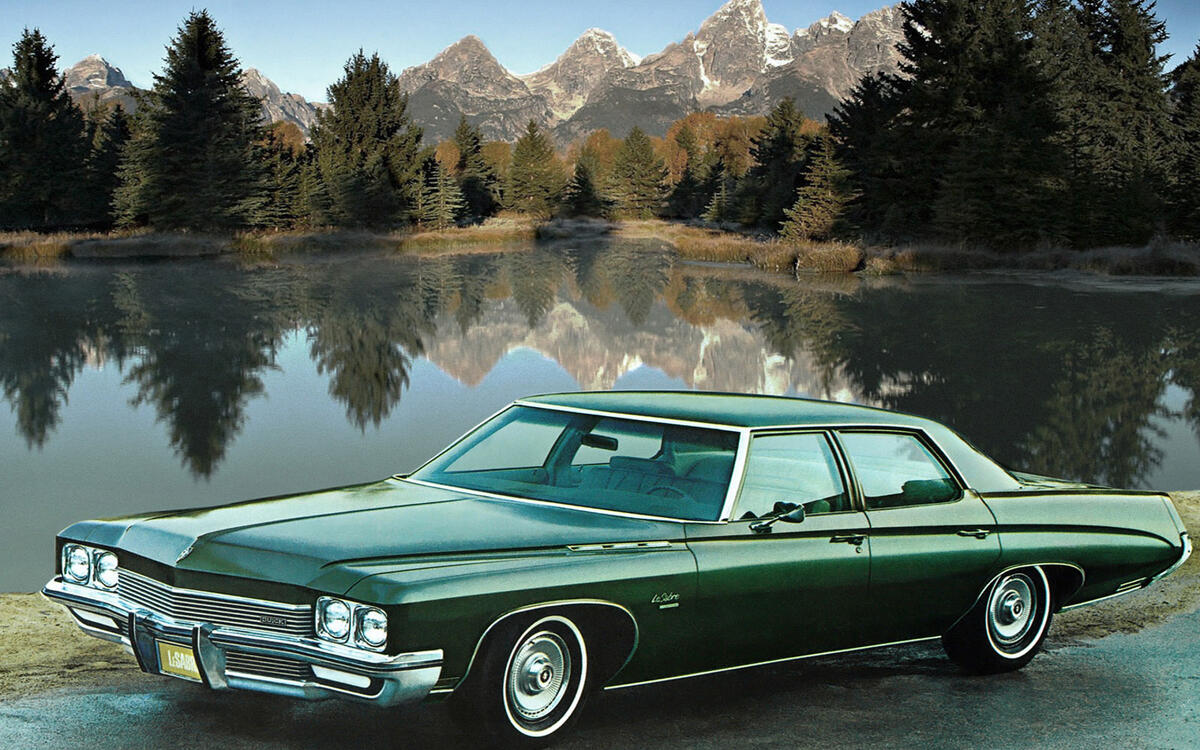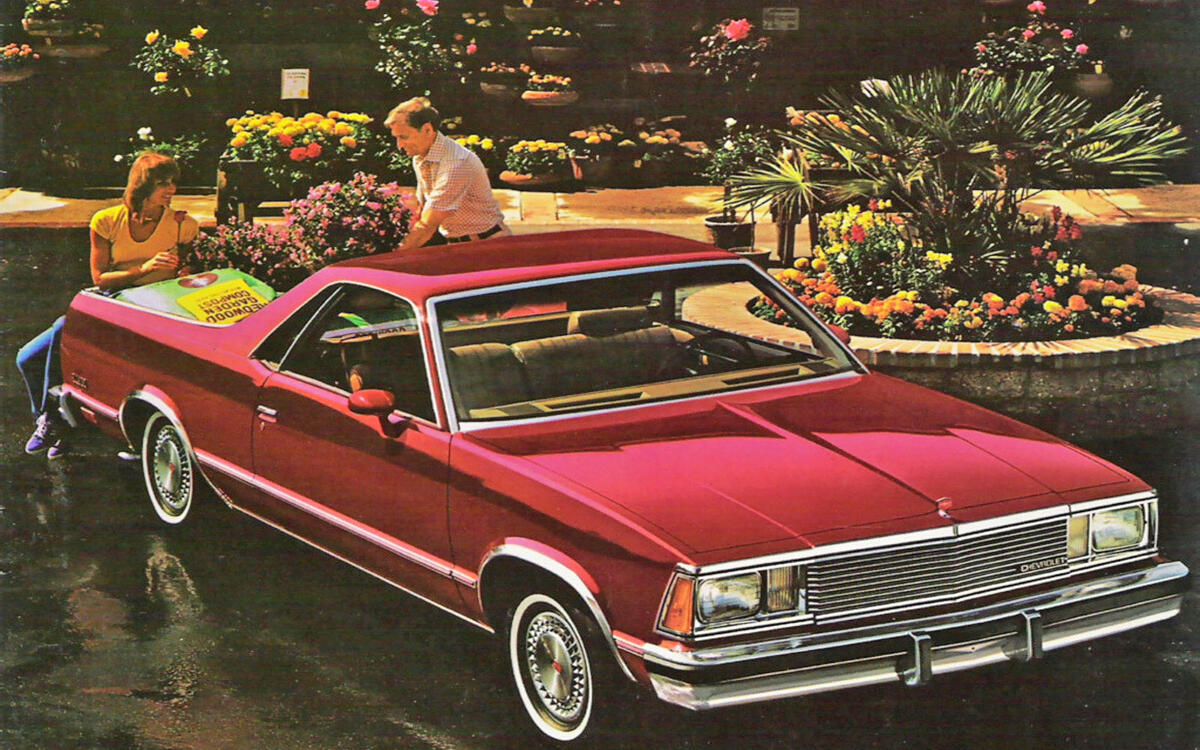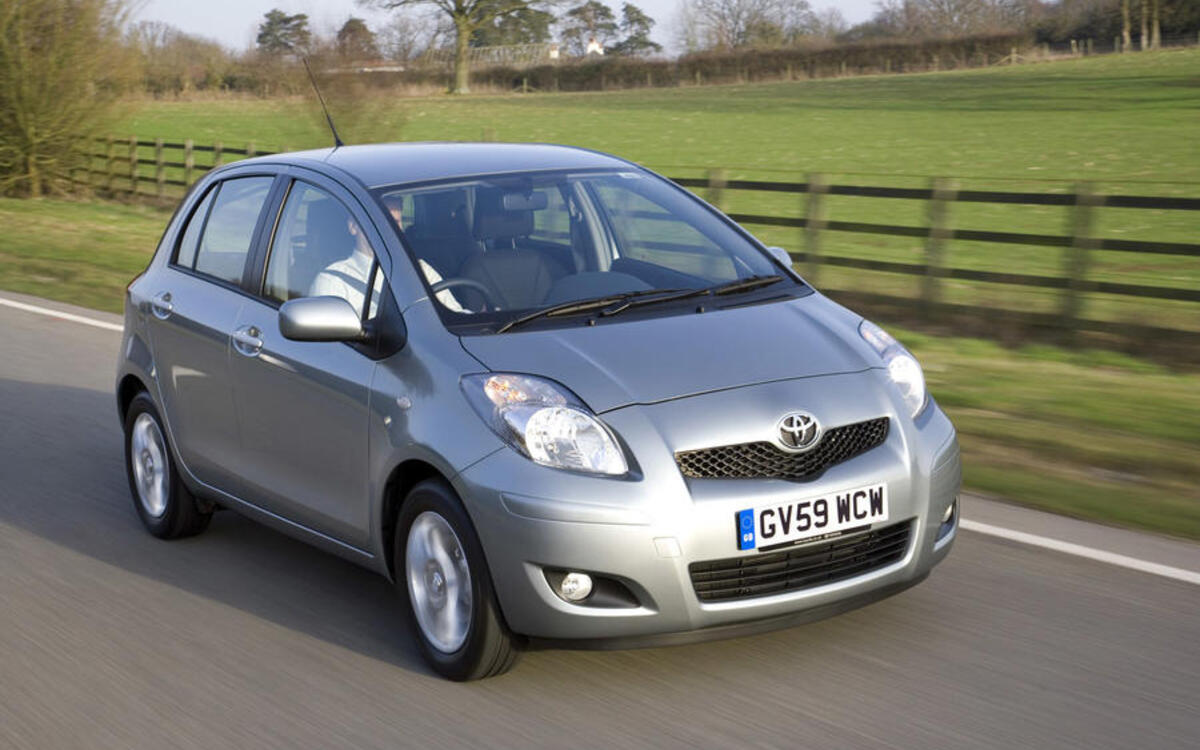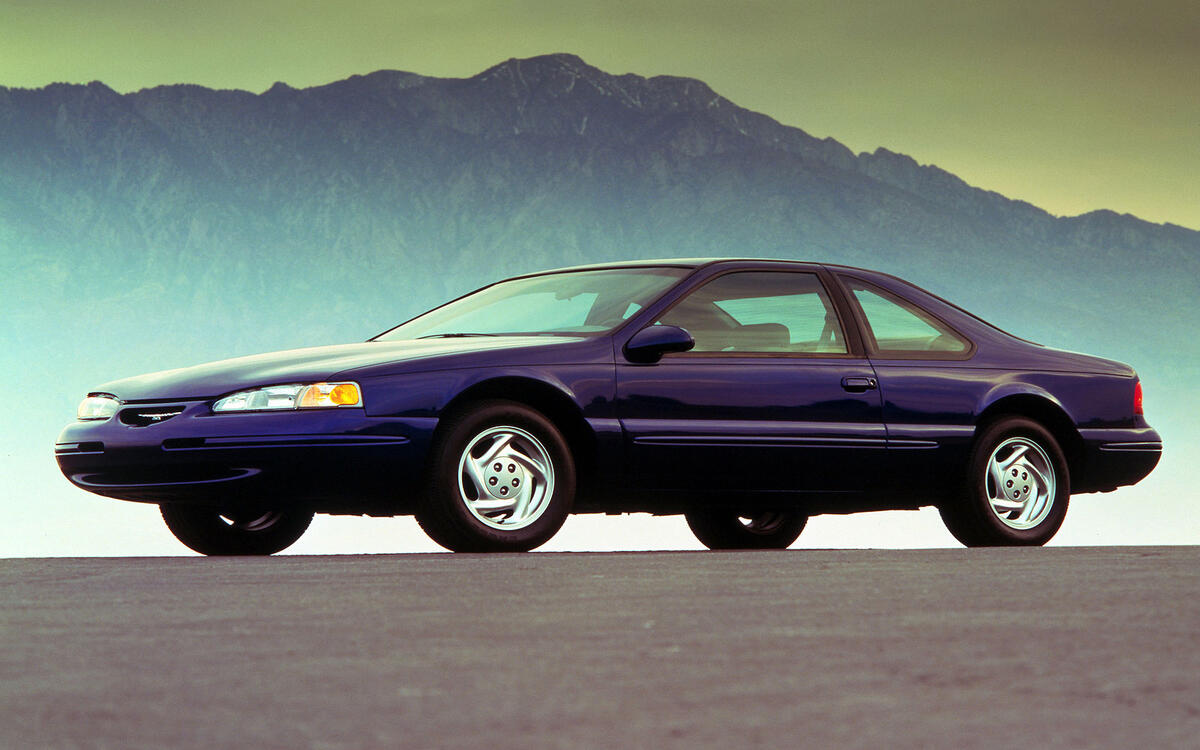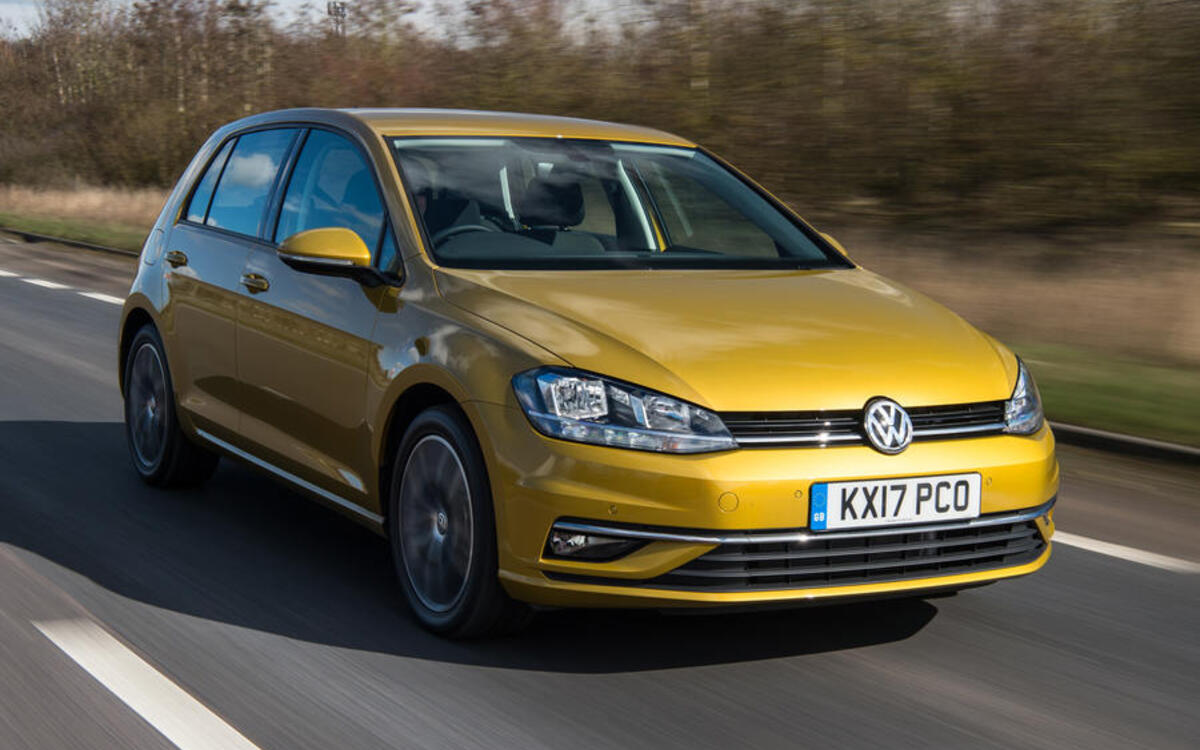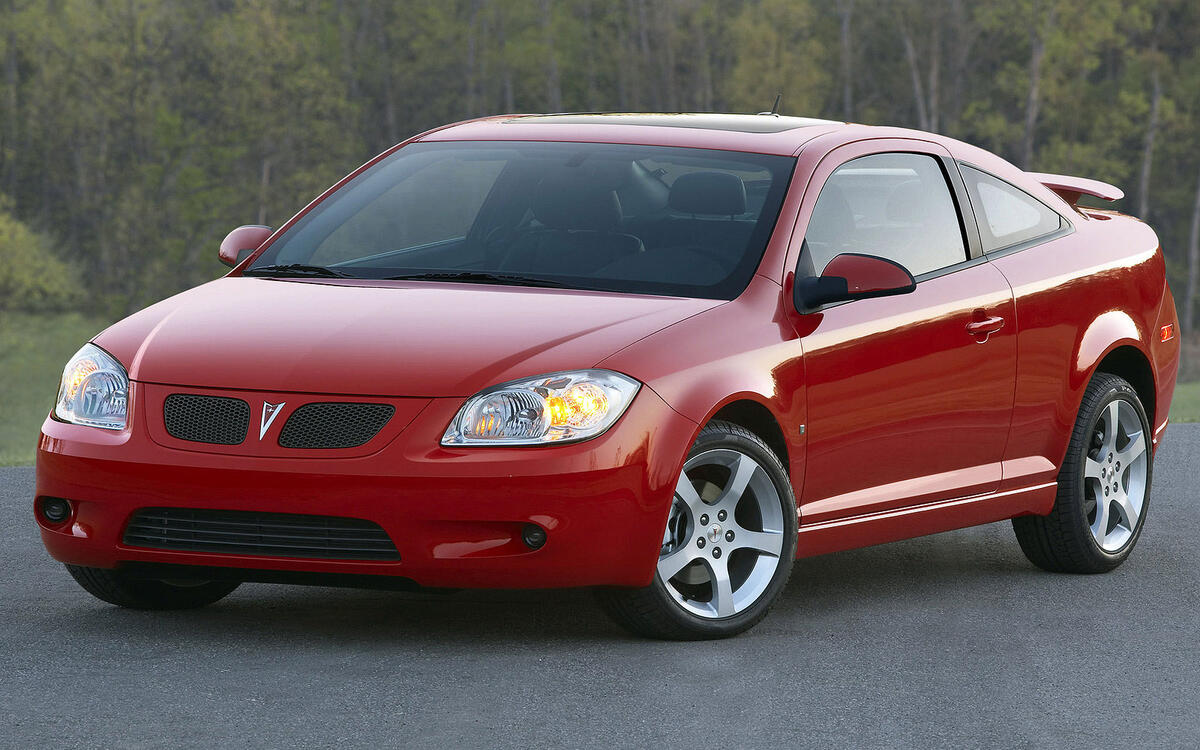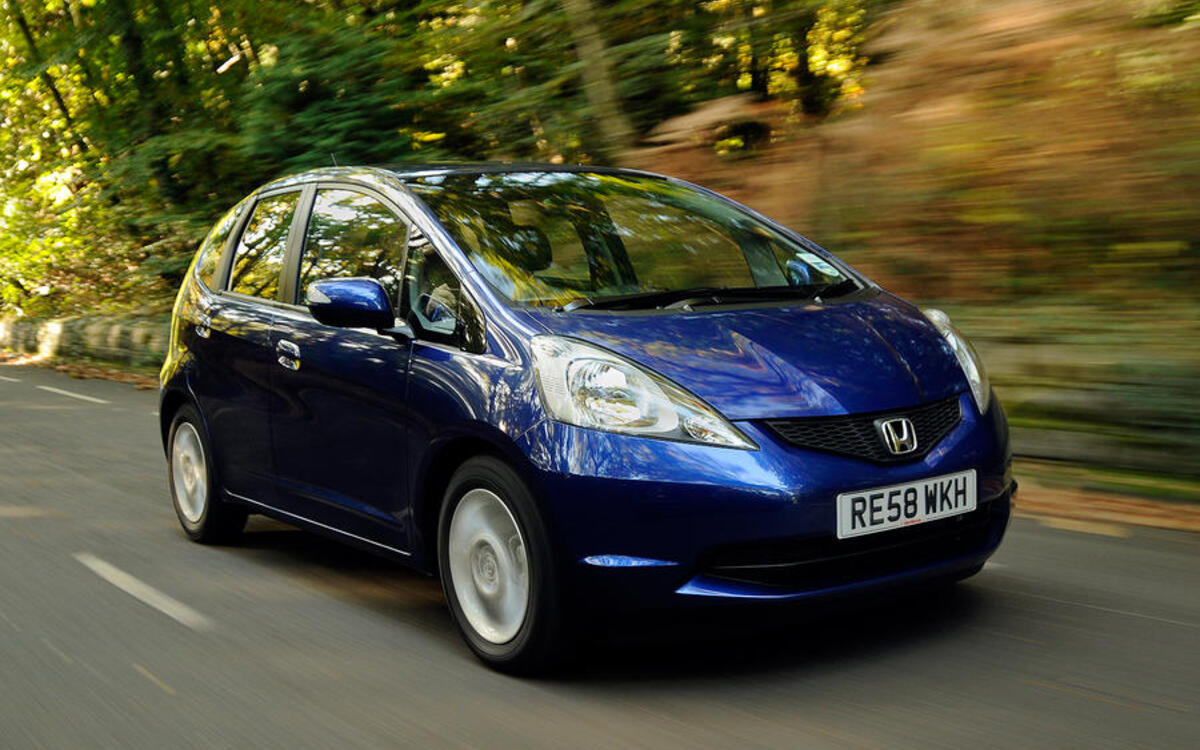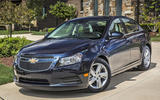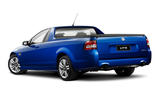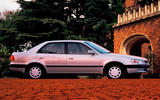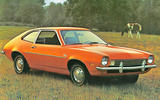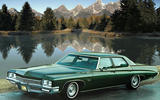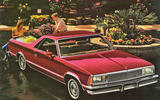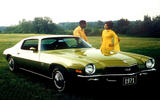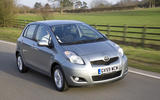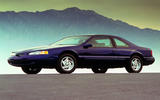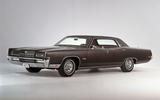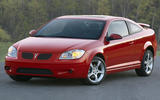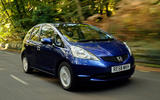 Slide of
Slide of
Buying a car is a big commitment, especially if it’s lugging around treasures such as family and friends.
But what happens when you get a letter through the door informing you that your prized possession needs to go back to the dealer, or it could melt like a chocolate teapot in front of your eyes? From phantom electronics to spiders’ webs, here are the major recalls that have sealed their place in automotive history:
 Slide of
Slide of
Chevrolet Cruzes’ detaching steering wheel
In 2011, a customer was maneuvering their 2011 Chevrolet Cruze (pictured) through a car park when they lost all control of the steering, and not because of some electronic gremlin, but because the steering wheel completely detached from the column. Luckily, no one was injured, and the issue was traced back to the assembly line, where the wrong steering wheel had originally been installed, later replaced by the correct one... but incorrectly as it turned out.
GM took the decision to recall the affected 2000 cars, check the steering wheel and rectify the error. The Chevrolet assembly line was then altered so that the machine that installed steering wheels could only fit the correct ones.
 Slide of
Slide of
Ferrari’s faulty brakes
A small piece of plastic was responsible for a major recall for Ferrari. Not only has the issue affected new Ferraris like the Roman, but models from 2005 upwards including the F430, 612 Scaglietti, F8 Tributo (pictured) and LaFerrari among many. In total, 23,555 cars were affected and were recalled.
The issue stems from a small plastic brake fluid reservoir cap struggling to vent sufficiently, resulting in leaking brake fluid and partial or complete brake loss. Ferrari’s fix is to replace the cap with something that can vent a bit better, and they’ll install software to give additional warnings about low brake fluid.
 Slide of
Slide of
Holden Commodore Ute VE faulty boot latch
The Commodore Ute is a utility vehicle capable of both swallowing timber and much else while smoking its rear-tyres, thanks to an available 6.0-litre V8 upfront. But a fault that plagued the car was a faulty boot latch that could easily open with very little force, releasing any content stored in the rear. In 2010, Holden recalled 34,379 vehicles and told owners that the faulty latch would be rectified in under 30 minutes.
 Slide of
Slide of
Mazda’s eight-legged friends
With many cars being parked outside all-year-round, it’s normal for spiders to move in and construct a home somewhere in the darkest of corners under your car's shiny bodywork. But in Mazda’s case, the arachnids had become more than just a nuisance.
The yellow sac spider is quite the petrol-sniffer, and with the Mazda 6 (pictured) having fuel vent lines, the spiders would settle down and spin webs in those vents, which had the potential to cause pressure build-ups and other carnage. Mazda claimed that, from 2010 to 2012, 42,000 cars would fall under their ‘bug fix’. A Mazda dealer would check for any blockages, caused by the eight-legged friends, and clear them if required. Software would then be installed to allow pressure monitoring.
 Slide of
Slide of
Subaru’s engine poltergeist
Across the Subaru range from 2010 to 2013 (Outback, Legacy (pictured), Impreza and Crosstrek), Subaru began to receive reports that cars were bursting into life on their own, and if you were unaware, the car would continue to run until there was no fuel left. However it turned out that the key fob was the culprit. Subaru had given customers the option of a key fob that had the ability to remote start the car, perfect for those wintery mornings.
The issue was that the key fob was rather fragile, and if it were to be dropped, it could malfunction and randomly start the car. Subaru advised owners to use the manual key until the issue could be resolved. 47,419 cars were recalled and their key fobs replaced.
 Slide of
Slide of
Chrysler Voyager radio fires
A cool 238,000 Voyagers were identified in 2004 to have a problem with condensation, which would drip through vents directly positioned above the radio, resulting in a short circuit. A high current of electricity would then be sent to the rear speakers causing them to melt and possibly catch fire. Customers could take their cars into their local Chrysler dealer where a cover would be installed over the radio vent slots, and in turn, that would prevent any further moisture intrusion.
 Slide of
Slide of
Toyota’s spontaneous airbag deploy
The Toyota Corolla in the early ‘90s had a potentially dangerous fault. A recall affecting 627,858 cars was introduced in 1995 due to a faulty airbag sensor that sat directly below the drinks holder in the center console.
If the sensor got wet, it could malfunction and bring on the airbag light, or worse, it could randomly deploy the airbag. Toyota resolved the issue by fitting a protective cover above the sensor in the affected cars, keeping it out of harm's way from any spilled liquid.
 Slide of
Slide of
Toyota Camry air conditioning fault
Yet again, spiders were the culprits here. Camrys from 2012 had a unique issue: spiders’ webs, if built around the air conditioning condenser, could block draining pipes, resulting in water dripping down onto the airbag module below, which could cause the airbag to inflate.
Toyota were aware of three airbags deploying and 35 cars that had airbag warning lights. A recall was soon issued for all 885,000 vehicles affected - a dealer would simply apply a sealant, and a cover, to the airbag module, in order to resolve the problem.
 Slide of
Slide of
Ford Pinto infernos
In 1968, Ford decided to make a small car named Pinto, and Ford bigwig Lee Iacocca ordered a development time of just 25 months compared to the usual 40+. The Pinto had to weigh no more than 2000 lb (909kg) and cost no more than $2000. Ford built several prototypes and began crash testing to meet a new set of safety regulations.
However, the car’s fuel tank sat directly behind the rear bumper and in the event of a rear impact crash, it could rupture and cause a fire. The short development time allowed no time for a fix before it went on the market; after several deaths occurred Ford was forced to recall 1.5 million cars in 1978 and fit them with rupture-proof tanks.
 Slide of
Slide of
Volkswagen’s faulty wipers
Amid the bubble-like bodywork of the original VW Beetle lay a darker side for cars produced between 1949 and 1969. People who had bought Beetles in that period sometimes complained that their windscreen wipers would come loose or simply fall off due to a single bolt coming undone, leaving them in quite a predicament in wet weather.
Volkswagen identified that a cool 3.7 million cars were affected and recalled them. However, owners were then forced by the automotive giant to dip into their own pockets for replacement parts.
 Slide of
Slide of
General Motors steering fault
Various 1973 model year Buicks, Chevrolets, Oldsmobiles and Pontiacs were called back to resolve a rather strange stone issue. If the drivers were to travel down an unpaved road, stones could flick up and become wedged in the engine compartment, causing issues with the steering mechanism.
It seems 96 incidents tied to the issue were recorded, 23 being accidents, and 12 people were injured as a result. GM recalled 3.7 million vehicles and installed a gravel shield over the steering coupling to prevent further build-up.
 Slide of
Slide of
Toyota’s accelerator scandal
A stuck accelerator was the potentially terrifying outcome of this particular issue that became headline news in 2010. Toyota then identified that the issue was down to a friction device in the pedal. It was designed to add pedal “feel” by increasing resistance.
However, the materials used were said to wear over time and begin to stick which meant that the pedal could be slow to return, and could leave the throttle partially open. Toyota reached out to owners of the 4.4 million cars involved to fix the issue by installing a precision-cut reinforced steel bar that reduced tension and resolved the problem.
 Slide of
Slide of
Chevrolet El Camino suspension bolt
This particular issue haunted not only the 1978 El Camino but also other GM cars such as the Chevrolet Malibu, Monte Carlo, Buick Regal and various pickup trucks as they all used the same part. The component in question was a simple bolt that held quite an important part in place: a rear suspension arm.
Overtime, the bolt could come loose and the suspension arm would detach and drop leading to loss of control. This led to 27 accidents and 22 minor injuries, but luckily no one was killed. GM recalled 6.4 million cars and replaced the troublesome item.
 Slide of
Slide of
Chevrolet Camaro engine mounts
Various GM vehicles including the 1971 Chevy Camaro (pictured) and Chevy Nova, and various V8 trucks, all shared the same issue: engine mount failures.
When the left-side engine mount broke due to a faulty part, the engine torque would force the engine to rise upwards and pull open the accelerator linkage, leading potentially to a runaway throttle; it would also pull the brake hose loose, making it difficult to stop. If this wasn’t enough, the automatic transmission could also end up affected and gears would be shifted one step to the right, eliminating the park position and the car could then be started in reverse.
GM initially denied the issue existed, but after some external investigation, they eventually issued a safety recall. While it affected 6.68 million vehicles, GM opted not to replace the mounts, but instead install a bracket and cable to restrict engine movement.
 Slide of
Slide of
Toyota window switch fires
6.7 million examples of the Toyotas Yaris, Rav4, Corolla and Camry were recalled due to a power window switch that could get heated and begin to melt. The issue stemmed from an insufficient amount of lubricating grease for the window’s master switch, allowing dirt and moisture to sit quite happily around the electronic gubbins and cause a short. Toyota recalled the affected cars built between 2005 and 2010 and local Toyota dealers would apply heat-resistant grease, and also replace the switch if required.
 Slide of
Slide of
Ford’s steering column fires
Ignition switches found in a majority of Ford cars built between 1988 and 1993 - including the Thunderbird and F-350 - could short for no obvious reason, causing a fire in the steering column - and the engines didn’t need to be running for this to happen, either. In total, 28 people were injured. Over 8.7 million vehicles were recalled for the defect and the switch was replaced at no extra cost.
 Slide of
Slide of
Volkswagen “Dieselgate” scandal
Between 2008 and 2015 Volkswagen fitted many of its diesel-powered cars with cheat devices that could detect when the car was being tested and alter performance to deliver lower levels of Nitrogen Dioxide, a major pollutant. When VW was exposed by regulators in America it quickly became apparent that 11 million cars globally were equipped with this device, and they would need to all be recalled to have it removed.
VW’s US boss at the time stated to the press: “we’ve totally messed up”. Following the scandal, former VW manager Oliver Schmidt was sentenced to seven years imprisonment, having been found guilty of concealing software used to evade pollution limits. The scandal has since cost VW around 40 billion Euros in fines and restitution costs.
 Slide of
Slide of
Ford’s park-to-reverse issue
The park-to-reverse issue found in a vast variety of Ford and Mercury cars, such as the Mercury Marquis (1970 model pictured) manufactured from 1966 to 1980, very nearly led to enormous problems for the Blue Oval. A design flaw was found in automatic gearboxes where they would self-activate reverse gear, thanks to a detent within the transmission that would become rounded, slipping park into reverse.
A later NHTSA investigation discovered that the issue did indeed lead to a disaster as 23 people had been killed as a result, and with a recall of 23 million vehicles, Ford faced a crisis. However, an agreement was made with the US government and the investigation was dropped. Ford then opted to send out labels to the affected owners, warning them of the defect. The company did still face stacks of lawsuits and ended up paying out an eyewatering $1.7bn in settlements.
 Slide of
Slide of
GM’s deadly ignition switch
30 million cars were affected by this problem, including the Chevrolet Cobalt, Pontiac G5 (pictured) and Solstice, and Saturn Sky and Ion: the ignition switch could spontaneously turn off the car, and it didn’t matter if you were sitting on your driveway or barreling down the motorway.
The switches within the ignition had torque thresholds that were low enough for the key to slip out of the run position which would shut down the engine and disable any safety features such as airbags, power steering and ABS. 124 people died as a result while 274 suffered from injuries. In an attempt to set the record straight, GM paid out $600m to victims' families, $900m to the US government, and agreed to repair the ignition systems in Cobalt and Pontiac G5 vehicles.
 Slide of
Slide of
Takata’s shrapnel airbags
The largest recall in automotive history was from a company called Takata that produced various components for well-known, and popular, car manufacturers including Honda, Nissan, Chrysler, GM, Mazda and Suzuki. The first recall was back in 1995 when the NHTSA discovered that Takata’s seat belt latch button was prone to breaking, which resulted in the occupant being trapped inside the car. In 2013, a bigger scandal was uncovered that involved Takata’s airbags.
The issue was that if the airbag were to deploy, it could explode and barrage the occupants in shrapnel. Both Honda and Takata were aware of the issue that could have killed many people, but they proceeded to keeping the NHTSA in the dark. As a result, the US justice system fined Honda $70m; Takata meanwhile was fined $14,000 for each day the company broke the law. It’s said that over 65 million vehicles were affected, from Acura to Volkswagen, and many firms in between. Shortly after, in 2017, Tokyo-based Takata filed for bankruptcy as the recall count climbed into the stratosphere.
Worried that your car was subject to a recall but remedial work hasn’t been carried out? In most cases, calling the manufacturer with your license plate number will reveal whether or not work still needs to be carried out. In most cases this work will be free of charge.
Matthew Macconnell
Category:
Executive
Access control:
Open

